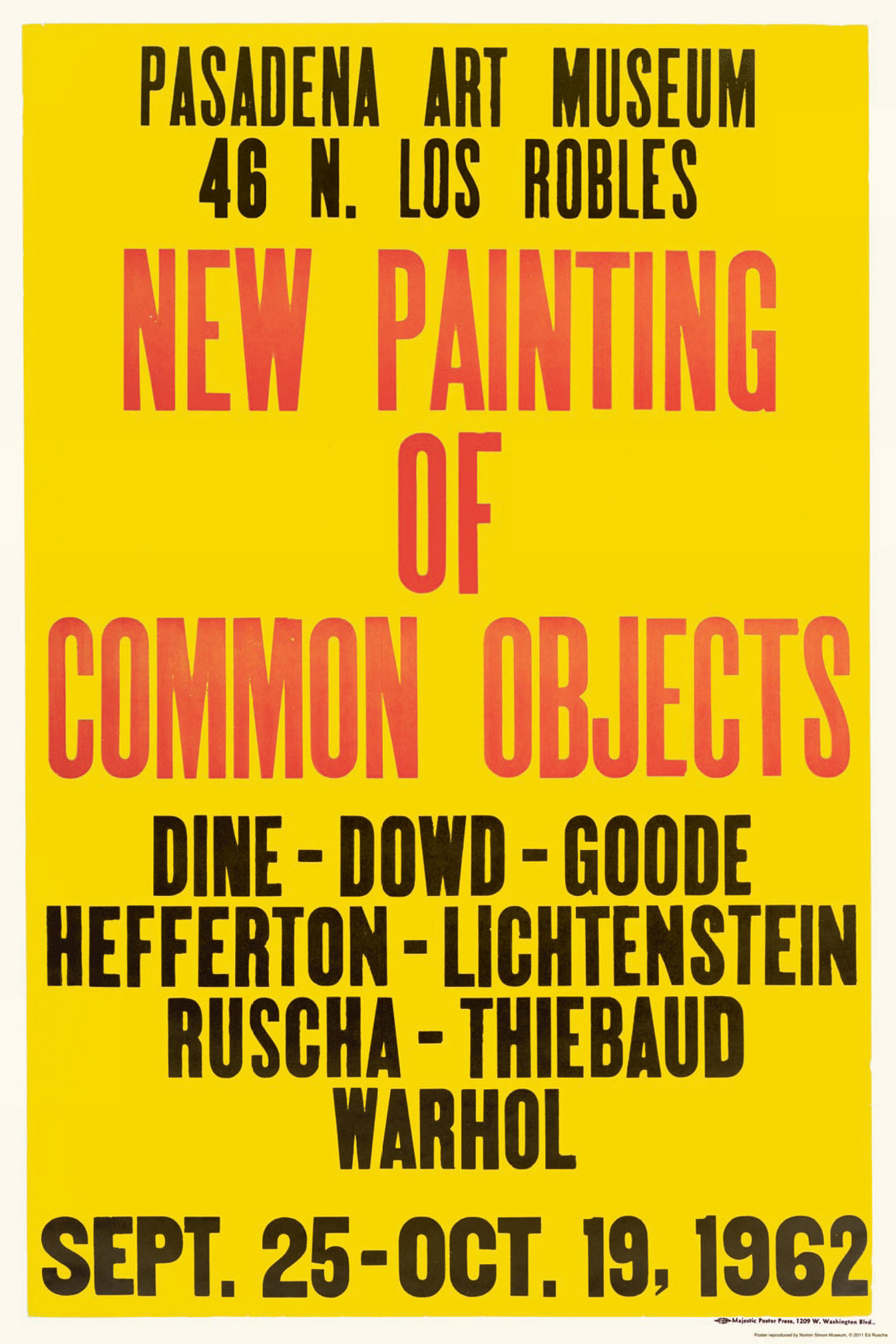New Uses of Common Objects, 2019 – ongoing
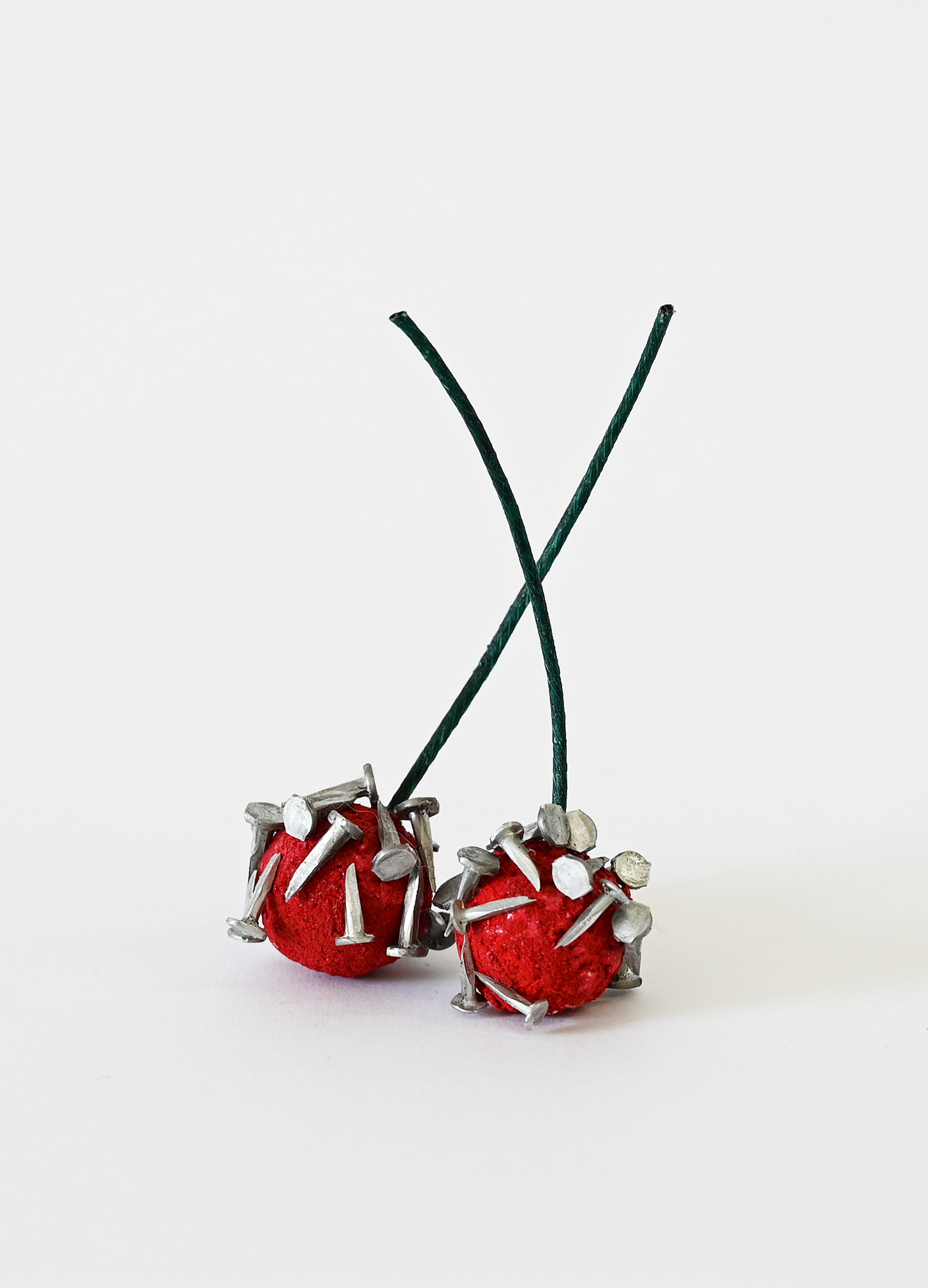
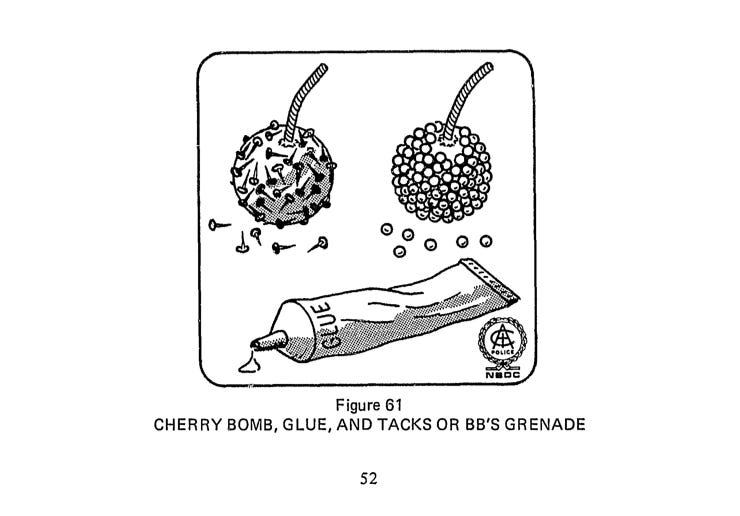
The police procedural manual Recognition of Explosive and Incendiary Devices, Part I, Hand and Rifle Grenades by Thompson S Crockett and Charles R. Newhouser, published in 1976 by the International Association of Chiefs of Police, Inc., includes—alongside diagrams of commercial and military devices—drawings of ingenious improvised devices composed from common household objects and readily available explosives (fireworks, black powder, shotgun shells). The drawings exhibit a pronounced ‘pop’ sensibility, as if executed by a moonlighting Eddie Russia, and incorporate brands popular in 1970’s America as well as easily obtained fireworks like ‘cherry bombs’.
Several of the improvised explosives and incendiary devices detailed in the manual were employed by the radical, violent, somewhat surreal insurgent group The Symbionese Liberation Army. Notably, two pipe bombs placed beneath LAPD cars were attributed to the SLA.
On May 17, 1974, two commercial incendiary devices, CS Flite-Rite tear gas projectiles, were fired by a SWAT officer into the South Central Los Angeles home where members of the SLA were holed up, incinerating everyone in the space. The event, broadcast live on national television, was the first major live national news event, owing to the use of new ‘minicam’ technology which allowed TV stations and networks to broadcast from remote locations. Patricia Hearst, the heiress-turned-kidnapping-victim-turned-SLA-member, was initially thought to be among those burned alive. It was later determined that she had watched the events unfold on television from a hotel room near Disneyland. 1
(from the exhibition catalogue for L.A. on Fire, 2019, curated by Michael Slenske, Wilding Cran Los Angeles)
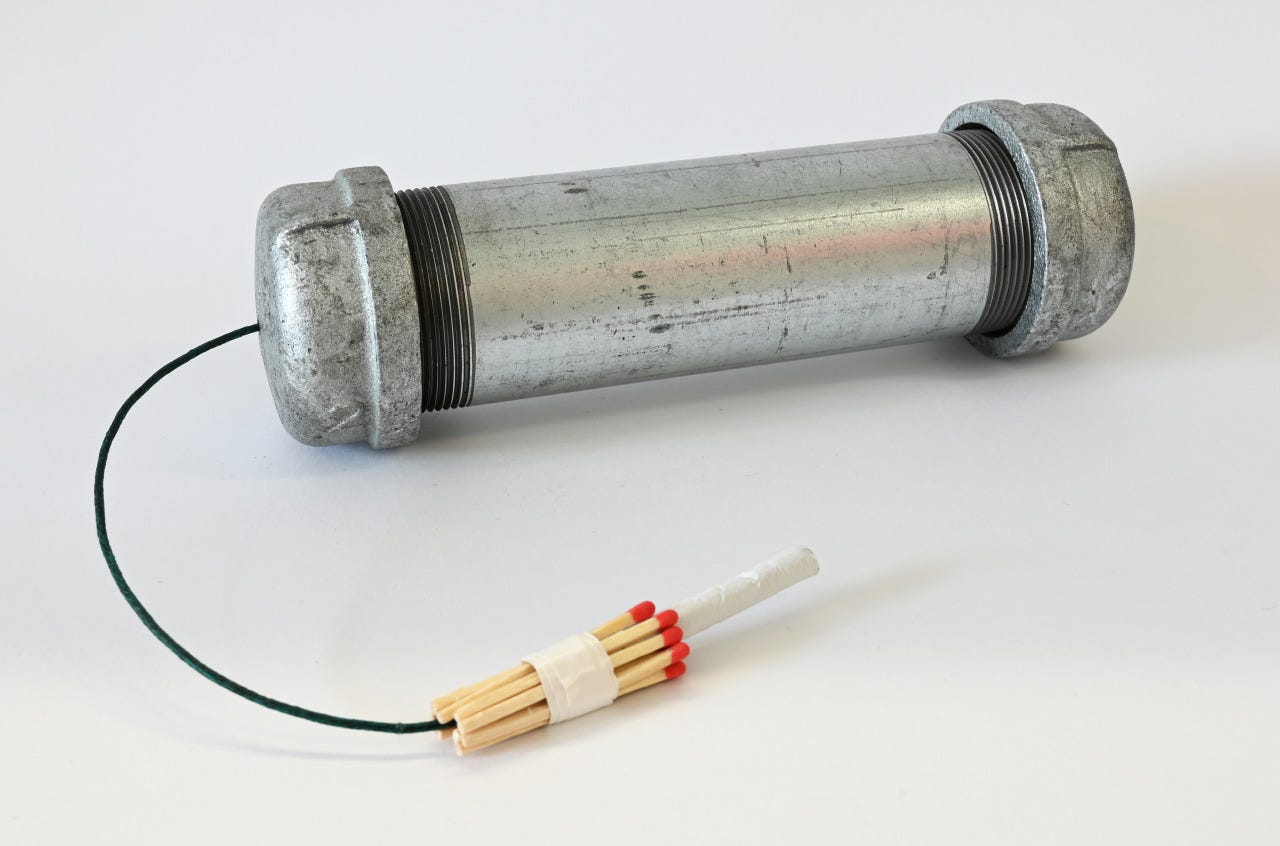
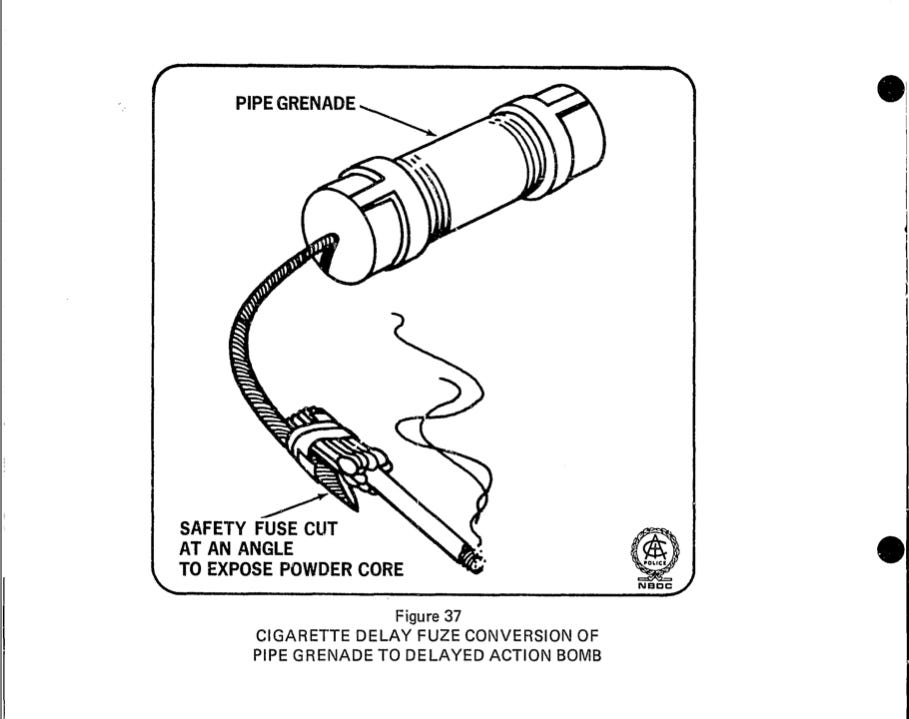
Untitled, 2019, video

Los Angeles Times:
On a weed-choked lot in South-Central Los Angeles there is a single palm tree, the only surviving remnant of a fire that put an end to one of the most infamous shootouts in the city’s history.
…for two hours, police SWAT team members exchanged fire with six Symbionese Liberation Army members, the urban guerrillas who had kidnaped Patty Hearst. A fire, ignited by tear gas, touched off a large cache of ammunition inside the house. Four SLA members died in the house and two others were killed in a shootout with police as they tried to escape. […]
“It was overkill, no doubt about it,” (neighbor) Leverette said. “The LAPD was making a statement to revolutionaries to stay out of the city.”
After the shootout, the LAPD was criticized by some who claimed that the department’s response was excessive. The day after the incident someone scrawled on a charred wall in front of the house: “It Took 500 Cops.” And that is what many in the neighborhood believed. 2
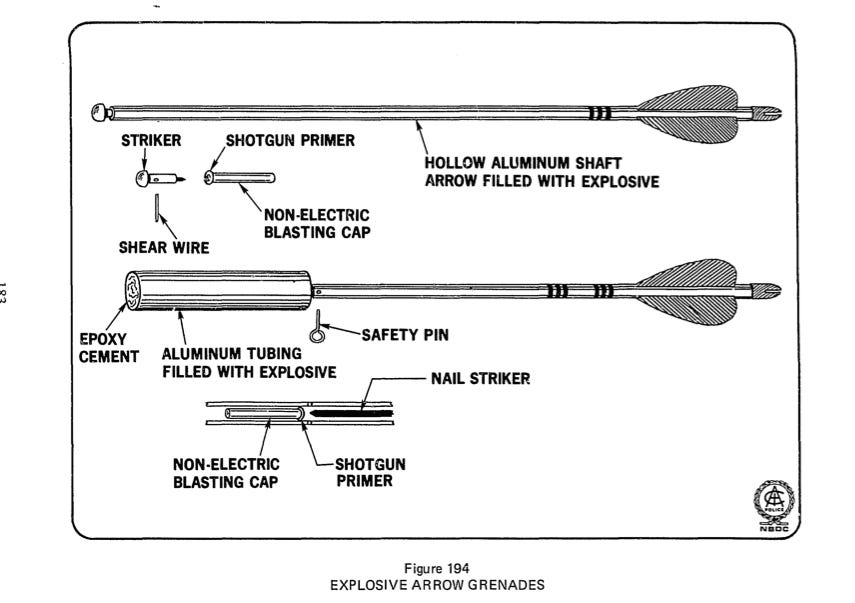

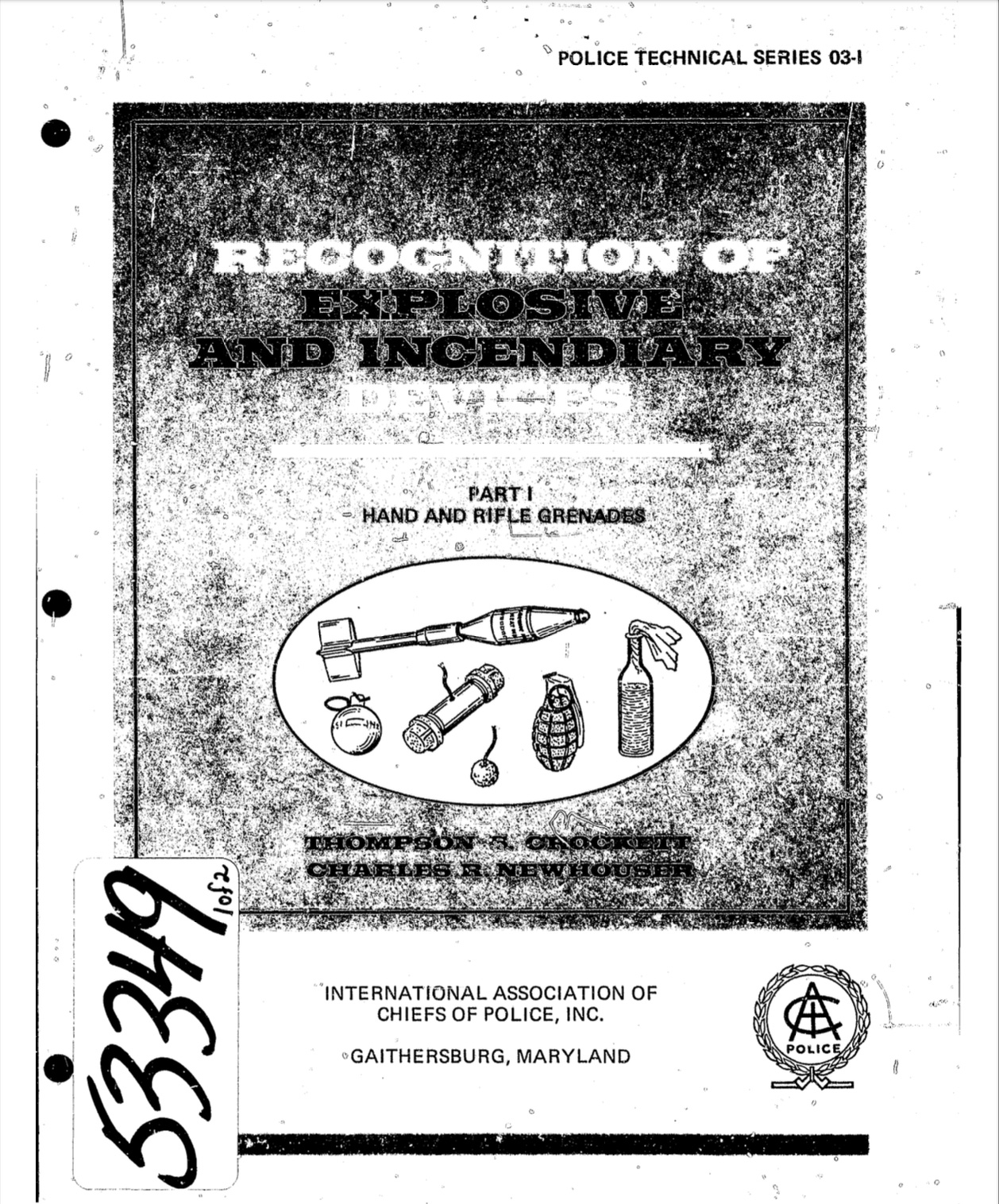
From Recognition of Explosive and Incendiary Devices, Part I, Hand and Rifle Grenades by Thompson S Crockett and Charles R. Newhouser:
The purpose of this publication is to provide public safety personnel with information on the key identification features of commonly encountered types of explosive and incendiary devices. While construction and functioning detail is frequently provided, these data are included only to facilitate recognition. Attempts to dismantle or render safe these devices should be made only by fully qualified bomb technicians.
The approach throughout has been to provide recognition data. However, it should be noted that some devices will not possess the common or general identification features normally associated with their particular classification. Although there will always be these exceptions to general identification rules, such cases are rare and any unidentified device can and should be treated as explosive and dangerous.
Military or commercial ordnance items and improvised or homemade explosive and incendiary devices generally consist of three major parts or components: the fuze, the body, and the filler. It is by correct visual recognition and evaluation of the first two of these components that a correct identification of the item is made. Careful observation of the fuze and the body of an item of ordnance should, in most cases, enable the investigator to determine the method of functioning of the and the effect produced by the detonation or ignition of the device. Correct identification of these two components may lead to a general or specific identification of the type of filler. As a practical matter, however, the non technician public safety officer is only concerned with recognition to determine:
• Is the suspicious object an explosive or incendiary device (bomb)?
• What risk of injury or property damage is involved?
• How can risk be reduced pending arrival of explosive disposal personnel?
While this series of publications should assist in the recognition of most devices, no individual is likely to be able to correctly identify or recognize all ordnance items. Since recognition ability is an acquired skill, it must be constantly exercised or the skill deteriorates. Where rare or unusual items are discovered and time permits, the Research Division of IACP will provide technical assistance in recognition and identification of explosive and incendiary devices. Should such technical assistance be desired, it is recommended that initial contact be established via telephone in order to insure that photographic and measurement criteria are mutually understood.3
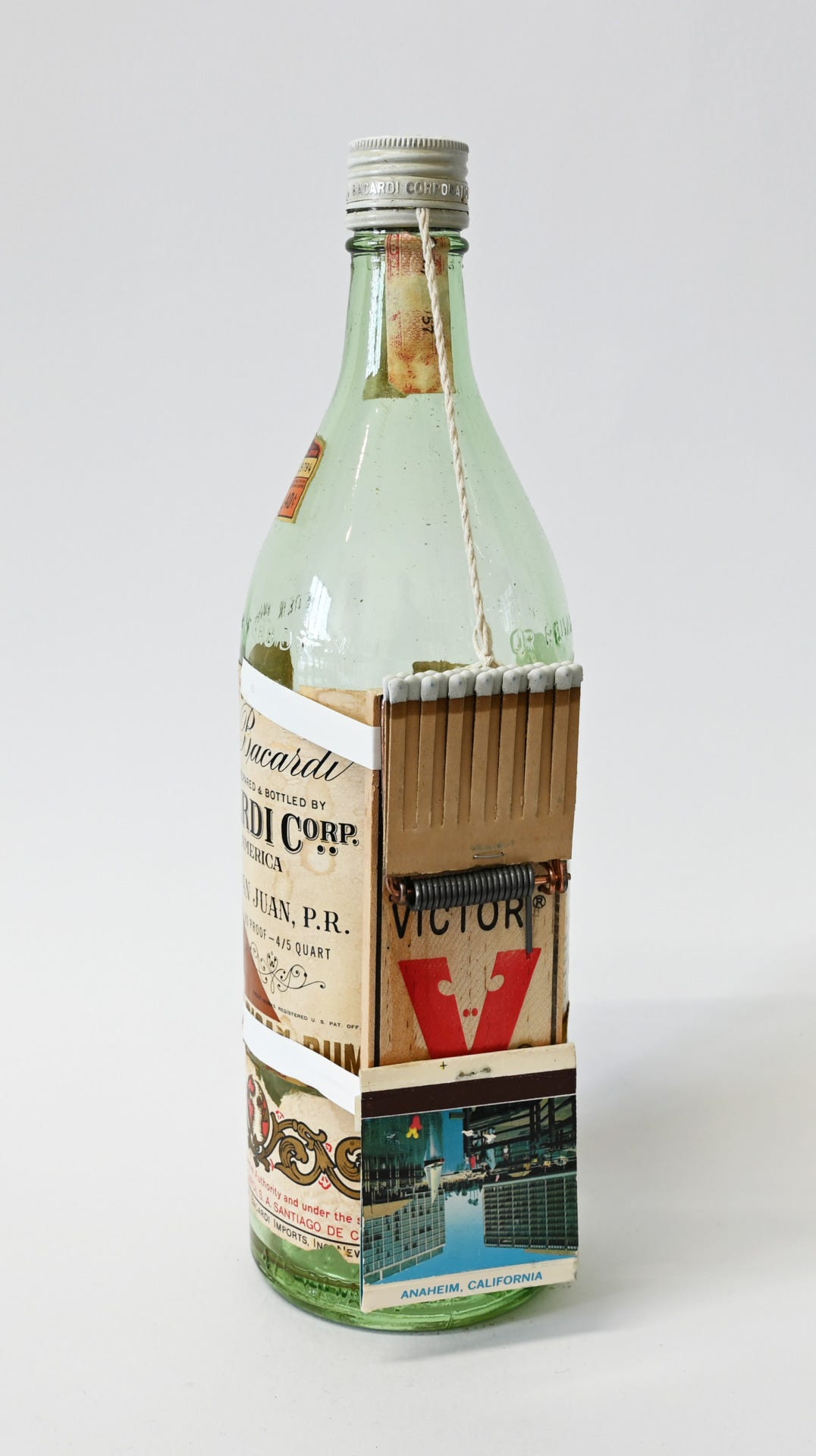
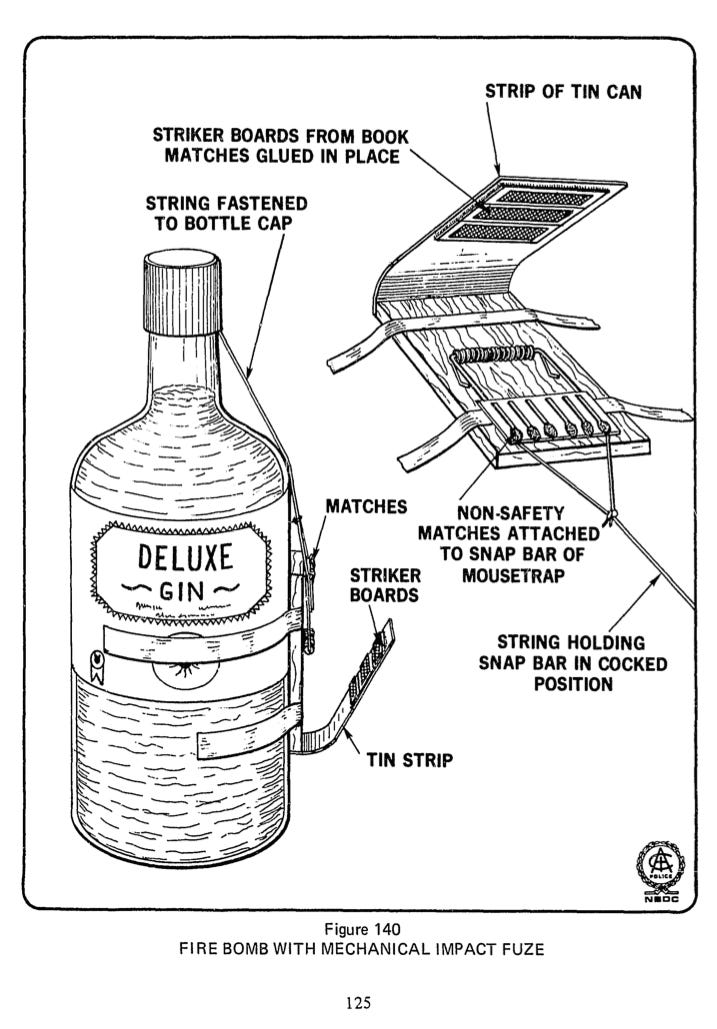
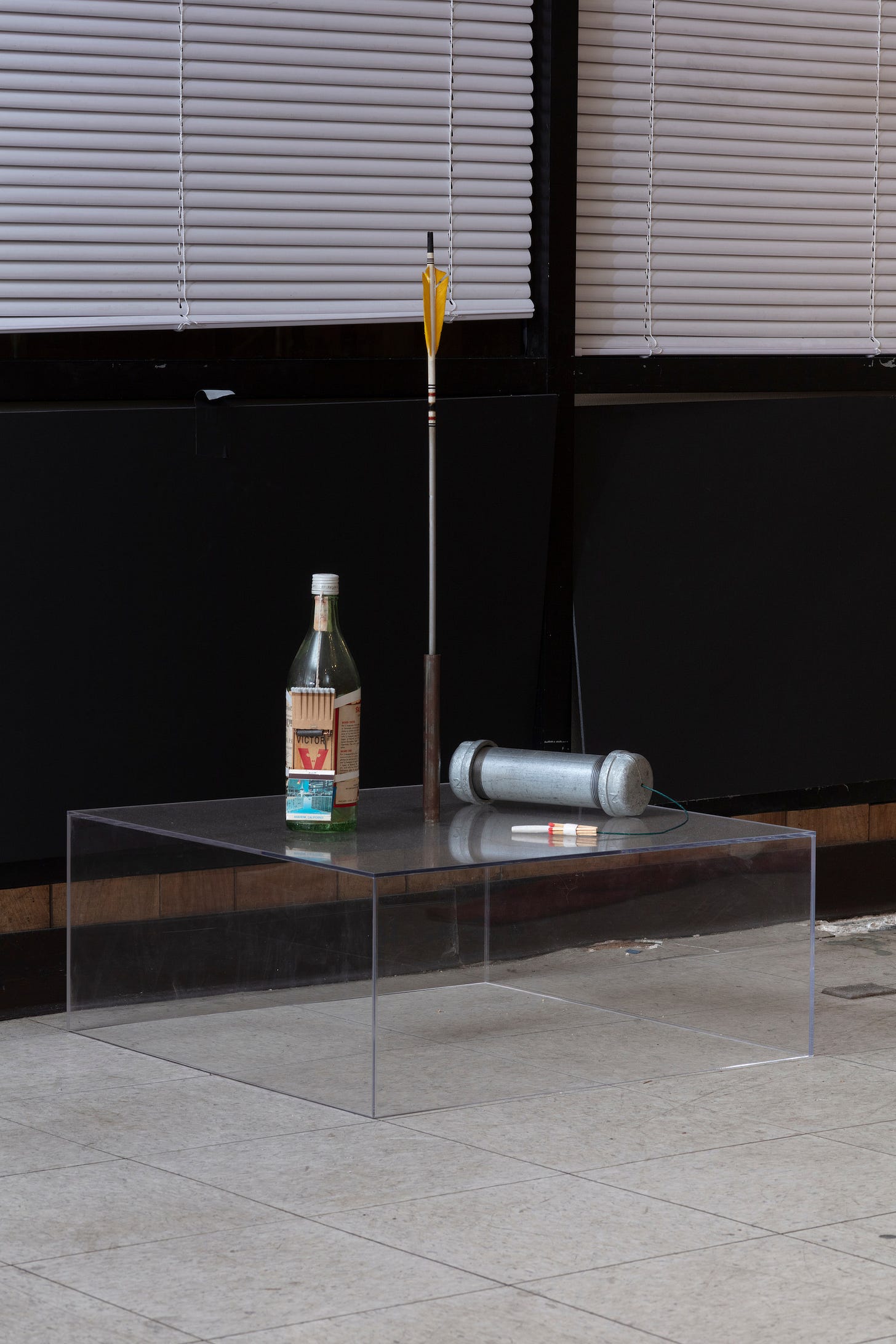
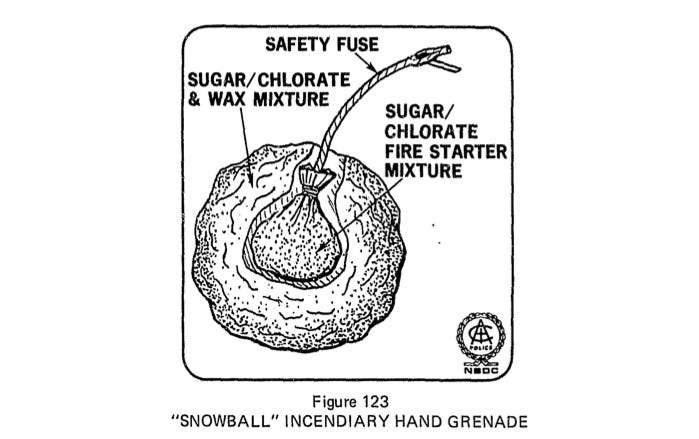
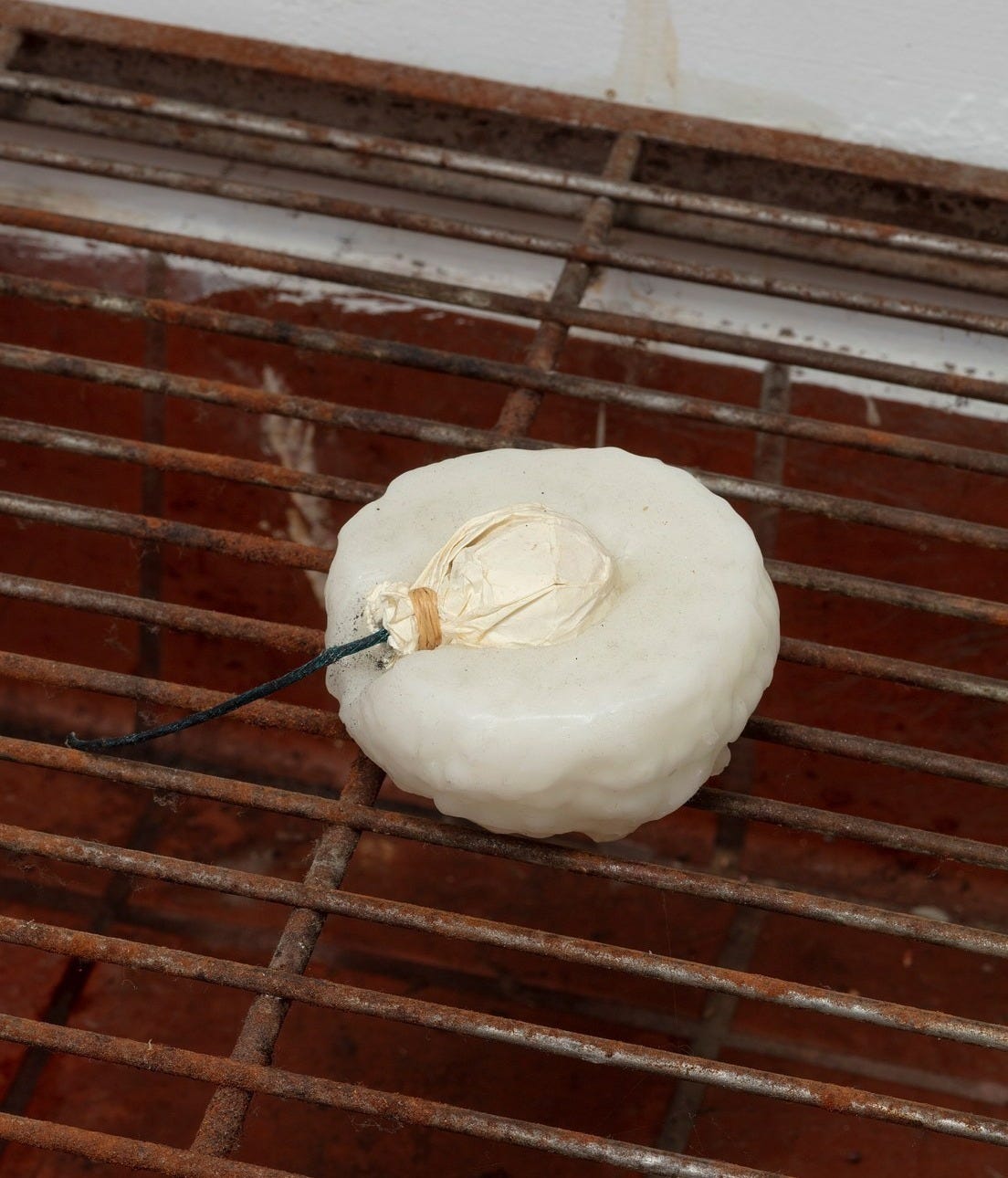

Originally shown in L.A. on Fire, curated by Michael Slenske, Wilding Cran Los Angeles, 2019. Shown in 1 TB Verbatim: Los Angeles Timing 2013-2025, curated by Keith J. Varadi, Gene’s Dispensary at Leroy’s Los Angeles, 2025 and The Poster Show, Sentiment Zurich, 2025. Thank you Kelly Wall, Michael Slenske, Naomi deLuce Wilding, Anthony Cran, Wilding Cran, Keith J. Varadi, Gene’s Dispensary, Leroy’s, Ian James, Gabriele Garavaglia, Sentiment Zurich
Scott Benzel. ed. Michael Slenske. L.A. on Fire exhibition catalogue, exhibition curated by Michael Slenske. Wilding Cran Los Angeles, 2019.
Miles Corwin. The Shootout on East 54th Street : Violence: Twenty years ago, the LAPD and the Symbionese Liberation Army exchanged fire at a home in South-Central. Los Angeles Times. May 18, 1994. Online:https://www.latimes.com/archives/la-xpm-1994-05-18-me-59109-story.html
Thompson S Crockett and Charles R. Newhouser. Recognition of Explosive and Incendiary Devices, Part I, Hand and Rifle Grenades. International Association of Chiefs of Police, Inc. 1976




